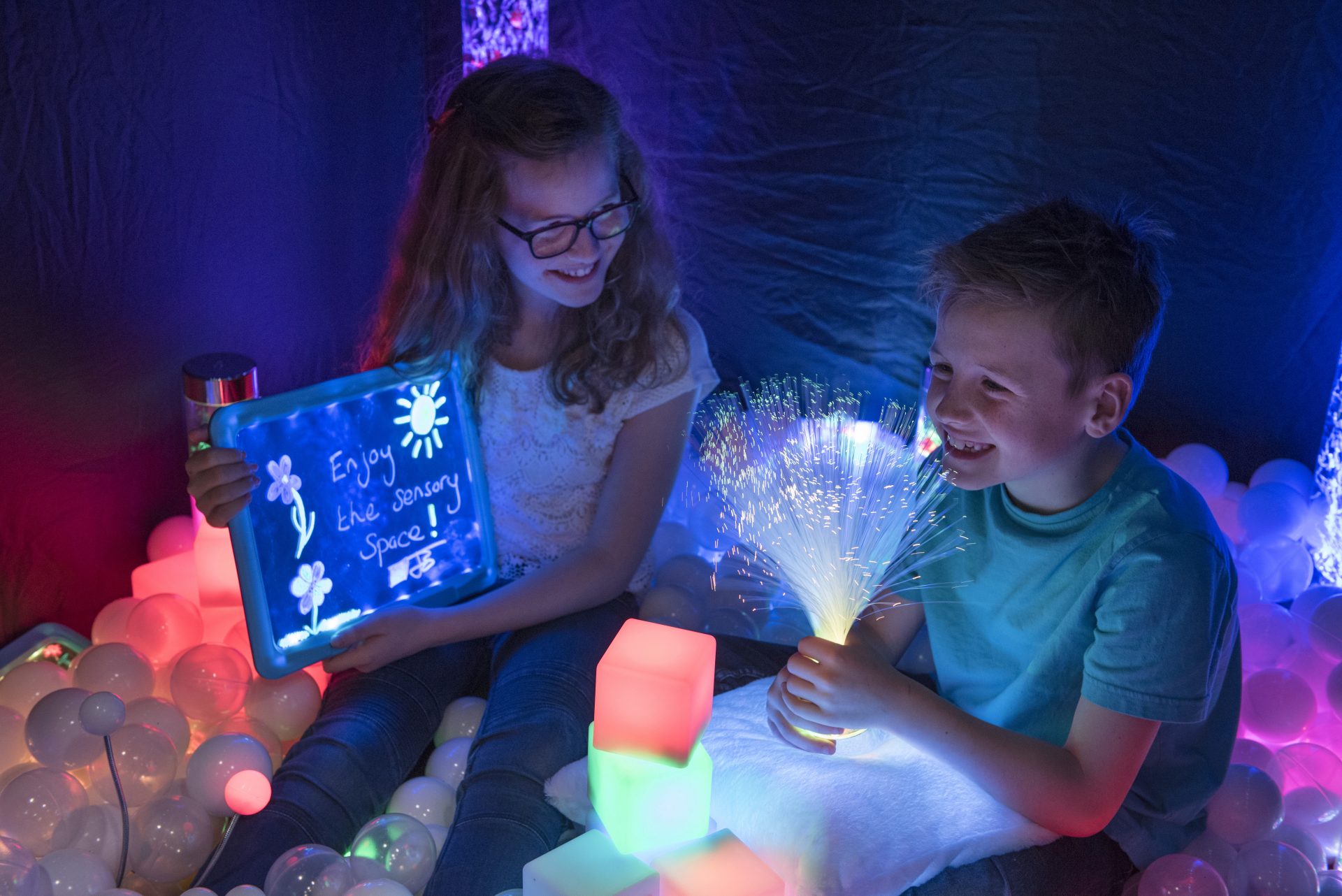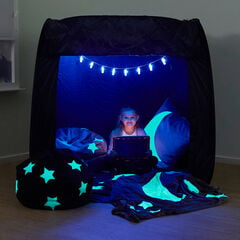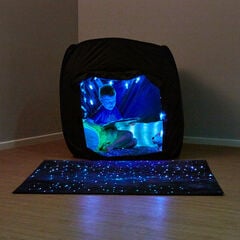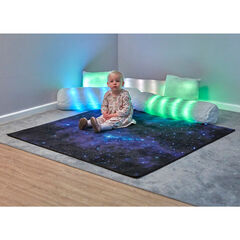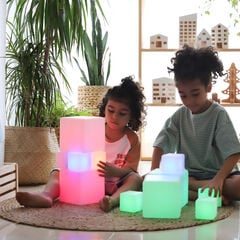A purpose built sensory room is a real luxury item and can be an extremely valuable tool in your arsenal for being able to provide pupils with a safe haven and a dedicated space to learn. When I say sensory room, I am thinking about those amazing discrete rooms we will have seen in glossy catalogues. Those with amazing resources such as interactive lighting and sound options, a bubble tube, beanbags, projections, fibre optics, smells, textured wall panels, a swing and so much more!
A well designed and used sensory room can offer many benefits, such as:
- Providing a calming, safe space for a pupil to self-regulate their sensory needs and emotions.
- Offering a fun space in which pupils can explore and learn through their senses.
- Creating an environment in which pupils can filter out and retreat from the many distractions and busyness of a school setting.
- Offering a range of sensory experiences to help a pupil who is feeling a bit flat to ‘perk up’.
- Becoming a valuable, immersive teaching tool and stimulus for learning by providing different environments for a pupil to experience.
However, it could also be argued that a sensory room can have limitations and drawbacks linked to its set up or how it is viewed.
This could include:
- If the setup is ‘fixed’ meaning that you can’t always create the environment that is required to exactly match a child’s immediate needs.
- The room itself can be expensive – budget is a barrier.
- Availability and staffing sometimes means the room is not available when it is needed, or a member of staff may not be available to facilitate use.
- The room can be hijacked to become an intervention space … suddenly a phonics poster appears!
- Underuse – curriculum and teaching time demands can make it difficult for staff to allow children to withdraw to the sensory room.
- Staff confidence or knowledge about how to use the room can make it inaccessible.
- Misconceptions about how the sensory room is used may mean that it is deployed as somewhere to send the ‘naughty’ pupils or only the angry ones to calm down. This does not fully utilise its potential.
Offering a discrete place with perhaps the obligatory beanbag and bubble tube is a positive start but does not always fulfil the needs of our pupils. Consequently, some sensory rooms can become a bit of a white elephant that gathers dust – a wasted opportunity.
Perhaps, when we think that we would like a sensory room, we should consider developing a flexible, moveable sensory space that offers a buffet of sensory experiences as opposed to a fixed sensory menu. This can be as simple and as low cost as hanging a shower curtain mounted from a hula-hoop to create a discrete space.
When we create a sensory room or space we should give careful consideration to the following:
- Benefits and experience – What experience do we want our pupils to have? What do we want our pupils to get out of using the space? Ultimately, how will it help them?
- How flexible, portable and easy to assemble/disassemble is the space?
- Location – Ensure the space is easy to access for the pupils and in terms of supervision, as appropriate.
- How and when the space will be used – Can pupils access it as and when required, or will they need permission or an agreed time?
- Staff confidence and knowledge – what do staff need to know and understand to ensure that the right pupils access the space at the right time, in the right way and with the right resources?
- Teaching and learning opportunities – Is the space purely to support sensory needs or to offer a different way of accessing the curriculum or is it even both?
- The senses – Are all of the senses catered for?
- Choices and options – Does the space offer choices so that pupils can explore to find out what best meets their needs?
Whatever you use and however you create your sensory space we should always remember that it is the pupil’s needs and experience of the sensory space that counts.
A huge thank you to Beccie Hawes for writing this blog for us.
About Beccie Hawes
Beccie has worked in all aspects of Special Educational Needs including mainstream, additionally resourced provision and specialist settings. She has extensive experience as a SENCo, Inclusion Manager, Lead Local Authority SEND Advisory Teacher and has set up and led an inclusion advisory service.
Beccie is currently proud to be the Head of Service with Cadmus Inclusive, part of Cadmus Services, which is based in Walsall. This service has a national reach and actively supports schools with all aspects of providing a high quality education for vulnerable learners. Beccie is the author of ‘The Complete Dyslexia Toolkit’ and co-author of ‘Getting it Right for SEND’ and ‘How to Create the Perfect Partnership with Parents’. Beccie also writes the national Ebriefing: SEND Bitesize. She has developed a number of educational resources to support learners which schools across the UK have purchased and use. Beccie remains very ‘hands on’ in the classroom and is passionate about being at the chalk face to support teachers and children to think differently for a brighter tomorrow. She is also the mum to four boys and a dog.


